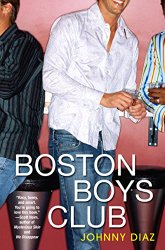"Amazon!" I declare. "I decided to self-publish this new book."
"Ah, okay. Congrats!"
It's a frequent conversation and I know what they're thinking, why self-publish? Why take that publishing path when I had two publishers for my previous four novels? There seems to be a literary stigma when you tell folks that you've self-published, like it's a bad thing. There's a pause, followed by a raised eyebrow and then a slight Hmm.
So why did I self-publish? The answer may not be what you think.
After working with my two publishers, whom I've enjoyed collaborating with and learned a lot from over the years beginning with my debut novel Boston Boys Club, I was curious (like us reporters tend to be.) I wanted to experience the process of publishing from beginning to end, on my own. In the past four years, I've watched some of my favorite authors (Alisa Valdes) dabble in self-publishing. When I read those books, I was impressed by the quality of the cover design, paper and of course, the content. They looked and read like real books. Wait, they were real books, like any other.
When I finished writing my new book Looking for Providence last fall, the idea of self-publishing intrigued me. Could I do this? It would be a new challenge, an education in publishing, a great way to learn about this emerging side of publishing. I had no idea of how to do it but I wanted to at least try. A literary experiment began.
There was another reason why I wanted to try self-publishing: I needed a project that would distract from the loss of my mom who passed away last November. Writing and editing the book was one of my few outlets from dealing with her aggressive colon cancer. I believed that self-publishing this book would be therapeutic, something fun and positive to focus on during the weekends besides my family and the raw memories. Hanging out with my fictional characters - Ronnie in Providence and Elias in Miami - kept me busy. I felt productive again. Focusing on the book was a way for me to focus on my healing.
So instead of embarking on the traditional publishing process of preparing query letters to my publishers and other houses as I have in the past, followed by the onslaught of rejection letters, I explored Amazon's Createspace service. I became a quick study. (I find some irony in that I learned in the ins and outs of Amazon's self-publishing platform at the Barnes and Noble store in Coral Gables where I spent my weekend afternoons gulping double espressos.)
At first, I was hesitant about this journey into self-publishing. But Createspace provides so many choices for every step of the process, from designing the book cover to the color of paper (who knew there were so many shades of white!). The company has stock photos based on theme (love, dogs, family, etc.) that you can pick from for your book cover. I chose the curly-haired guy sitting on a hill with a white dog because it looks like Elias, one of my characters who befriends a white dog named Mr. Ollie in the novel.
 |
| I designed the cover. Cool, huh? |
There were so many choices that at times, I felt overwhelmed, even intimidated. So I poked around and played with the designs and formats until I found one that I liked. With my previous publishers, they chose the design and look for your book and you're welcomed to chime in. At the end of the day, it's still their book. This time around, it was all my choosing which I liked. For the first time in my life, I was el jefe and it felt good.
And once I had the book edited (several rounds of my own proofreading and sharing chapters with friends,) my focus turned to formatting. Formatting? The F-word? Again, I had no idea how to do this. But the patient support staff at Amazon walked me through it. One time, I asked for help online and they asked for my phone number, which I provided. Seconds later, my cellphone rang: A support staffer was on the line, ready to assist.
Once you're done with formatting, they review your file for any formatting issues (which I had some) and typos. Up until this point, I hadn't paid any money to Amazon for their buffet of services because I did it on my own. When you order a proof of your book, you pay about $3 for a copy (or you can do it for free using their digital proof.) I opted for the physical proof with each round of edits as I experimented with different fonts and line-spacing. Again, the beauty of self-publishing is that you're in control. You can tinker with things as much as you like.
 |
| back cover of the book. I like orange. |
While the process has been educational, it's been a lot of hard work too. In the months that I spent designing, formatting, editing, proofing this book, I could have probably written a whole other book. (I'm that fast!) And there are drawbacks. Publishers have a built-in distribution system for retail stores and online. With self-publishing, you are your own distribution system. Unless you have a following or a fan base, your book may bob out there alone in the sea of Amazon where it searches for passing ships to throw it a lifeline or a tow. (My book has hitched itself to my previous titles which has helped some.)
Amazon also tries to find similar themed-books or authors to suggest as purchases with your self-published title (Folks seem to be buying my book with fellow gay writers Richard Blanco, Armistead Maupin and my friend Kenneth Walsh and....Cher? Someone bought her CD with my book. Go figure!) but that's not always guaranteed. It was a lot easier with previous publishers yet I have a different sense of accomplishment in doing this all on my own.
Another challenge: promoting the book. With a publisher, a marketing person/coordinator will help mail out copies of the book to media outlets for review and set up promotions. With self-publishing (unless you hire someone), you're your own publicist. Sometimes, I feel like a panhandler at work and on the street corners of social media holding up a sign that reads: "I HAVE A NEW BOOK! PLEASE READ AND HAVE A BLESSED DAY!" or "LOOKING FOR PROVIDENCE IS LOOKING FOR READERS!"
At a book reading last week, a reader named Jason Halle asked me, "Would you self-publish again?" I will definitely write another book and have already began working on it. But at the end of the day, does it really matter how you get published? Writers write because it's a part of them, it's in them. We don't have a choice. The craft chooses us and now we can choose how to release those words into the world whether we self-publish or get published. To be continued.










No comments:
Post a Comment